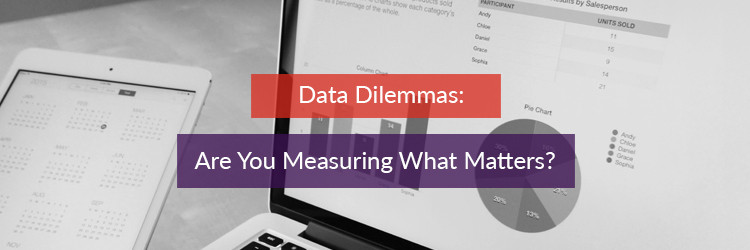
In today’s data-driven world, organisations across industries are collecting vast amounts of information. However, having data isn’t the same as having the right data. Many businesses struggle with a critical question: Are we measuring what truly matters?
The Data Abundance Paradox
We’re swimming in data, but are we drowning in irrelevance? It’s a common scenario: companies invest heavily in data collection and analytics tools, only to find themselves overwhelmed and unsure if they’re focusing on the right metrics. This paradox of data abundance coupled with insight scarcity is more prevalent than you might think.
The Pitfalls of Misaligned Metrics
Vanity Metrics
These are numbers that look good on paper but don’t translate to actionable insights or business value. For example, a food manufacturer might track total production volume without considering quality metrics or customer satisfaction.
Legacy Measurements
Sometimes, we continue measuring things simply because “that’s how it’s always been done,” even when those metrics no longer align with current business goals or market realities.
Proxy Indicators
While useful in some contexts, relying too heavily on proxy indicators can lead to misguided decisions. For instance, measuring equipment uptime without considering efficiency or output quality can paint an incomplete picture.
Data Silos
When different departments collect and analyse data in isolation, it’s easy to miss the bigger picture and overlook crucial interdependencies.
Signs You Might Be Measuring the Wrong Things
Decisions Don’t Improve
If your data isn’t leading to better decision-making, it might be time to reassess what you’re measuring.
Disconnect with Business Outcomes
Your metrics should have a clear line of sight to key business objectives. If that connection is fuzzy, you might be focusing on the wrong data.
Overemphasis on Easily Measurable Metrics
Just because something is easy to measure doesn’t mean it’s important. Be wary of prioritizing convenience over relevance
Set Variability Targets
For critical processes, set targets and control limits, not just for averages, but for acceptable ranges or standard deviations.
Lack of Action
If your data reports are met with shrugs rather than spurring action, it’s a sign that the information may not be as valuable as you think.
How to Ensure You’re Measuring the Right Things
Start with Strategy
Align your metrics with your overall business strategy and goals. What are you trying to achieve, and what data will help you get there?
Involve Stakeholders
Engage with different departments to understand what information they need to make better decisions.
Question Everything
Regularly audit your metrics. Ask why each piece of data is being collected and how it’s being used.
Focus on Outcomes
Instead of just measuring activities, try to measure outcomes and impact.
Embrace Experimentation
Don’t be afraid to test new metrics. Start small, measure the impact, and scale what works.
Seek External Perspectives
Sometimes, an outside view can help identify blind spots in your data strategy.
The Power of the Right Data
When you’re measuring the right things, the impact can be transformative. Relevant, actionable data can drive innovation, improve efficiency, and give you a competitive edge. It’s not about having more data – it’s about having the right data.
Conclusion
In a world where data is often equated with insight, it’s crucial to step back and critically evaluate what we’re measuring and why. The right data, aligned with your strategic goals, can be a powerful tool for growth and innovation. But the wrong data? It’s just noise.
Are you confident you’re measuring what matters in your organisation? It might be time for a data audit to ensure your metrics are driving real value, contact our team to find out more.

